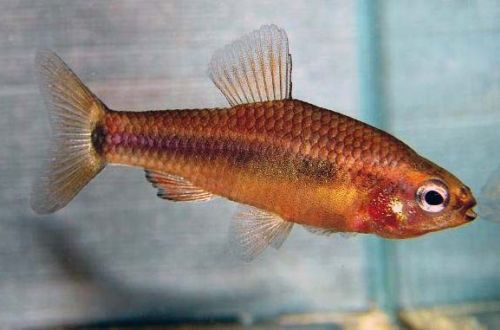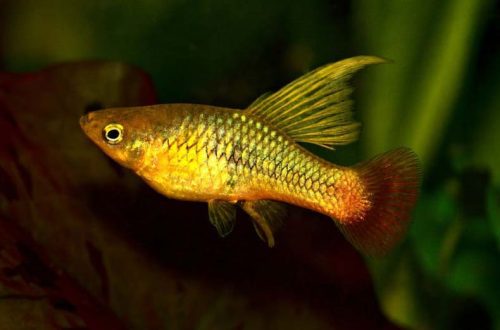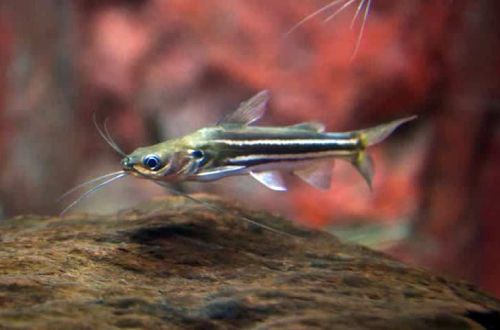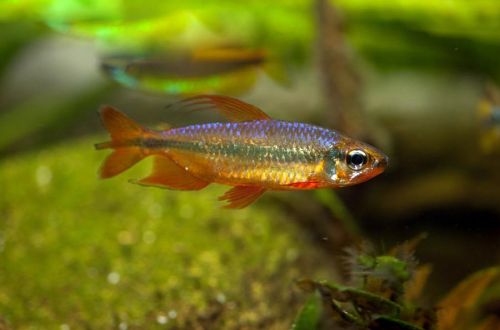
Neolebias Anzorga
Neolebias ansorgii, scientific name Neolebias ansorgii, belongs to the family Distichodontidae. Rarely found on sale due to special requirements for its content. In addition, suppliers rarely keep fish in proper conditions, from which they lose the brightness of colors, which significantly reduces the interest in them from ordinary aquarists. Although with the right approach, they could compete with many popular aquarium fish.

Contents
Habitat
It comes from equatorial Africa from the territory of the modern states of Cameroon, the Democratic Republic of the Congo, Nigeria, Gabon, Benin. It lives in numerous swamps and small ponds with dense vegetation, as well as streams and small rivers flowing into them.
Brief information:
- The volume of the aquarium – from 40 liters.
- Temperature – 23-28°C
- Value pH — 5.0–6.0
- Water hardness – soft (5-12 dGH)
- Substrate type – dark based on peat
- Lighting – subdued
- Brackish water – no
- Water movement – weak or still water
- The size of the fish is up to 3.5 cm.
- Meals – any
- Temperament – peaceful
- Keeping alone or in small groups of 3-4 fish
Description
Adults reach a length of about 3.5 cm. They are distinguished by a bright iridescent color. Males have a reddish-orange body with a dark stripe along the lateral line and fin edging. At a certain angle of incidence of light, a greenish tint appears. Females look more modest, although larger than males, light blue color dominates in coloring.
Food
It is recommended to serve frozen and live food, although they can be accustomed to dry food, but in this case, try to purchase food only from well-known and reputable manufacturers, since the color of fish largely depends on their quality.
Maintenance and care, arrangement of aquariums
Successful keeping is possible in a small low tank from 40 liters, no more than 20 cm high, simulating the conditions of equatorial swamps. The design uses a dark peat-based substrate, numerous snags, roots and branches of trees, dense thickets of plants, including floating ones. Dried leaves and / or cones of deciduous trees are immersed at the bottom, which, in the process of decomposition, will saturate the water with tannins and color it in a characteristic light brown hue. The leaves are pre-dried and then soaked in a container until they begin to sink. Update to a new portion every 1-2 weeks. The lighting is subdued.
The filtration system uses filter materials containing peat, which helps to maintain acidic pH values at low carbonate hardness.
Maintenance of the aquarium comes down to weekly replacement of part of the water (10-15%) with fresh and regular cleaning of the soil from organic waste, such as uneaten food residues, excrement, etc.
Behavior and Compatibility
A peaceful and very timid species, unable to compete for food even with other miniature species of similar temperament. It is recommended to keep in a species aquarium in a pair or a small group, very specific conditions of keeping play in favor of this option.
Breeding / breeding
Successful breeding experiences in home aquaria are rare. It is known that fish breed by releasing up to 300 eggs (usually no more than 100), which are extremely small in size, but gradually, absorbing water, increase and become visible to the naked eye. The incubation period lasts only 24 hours, and after another 2-3 days, the fry begin to swim freely in search of food. They grow quickly, reach sexual maturity already in the seventh month of life.
Since Neolebias Anzorga does not show parental care for offspring, spawning is carried out in a hotel tank, smaller than the main aquarium, but designed in a similar way. In order to protect the eggs, the bottom is covered with a fine-mesh net or a layer of Java moss. With the beginning of the mating season, the fish are temporarily placed in this makeshift spawning tank, and at the end they are returned back.
Fish diseases
A balanced aquarium biosystem with suitable conditions is the best guarantee against the occurrence of any diseases, therefore, if the fish has changed behavior, color, unusual spots and other symptoms, first check the water parameters, if necessary, bring them back to normal and only then start treatment.





